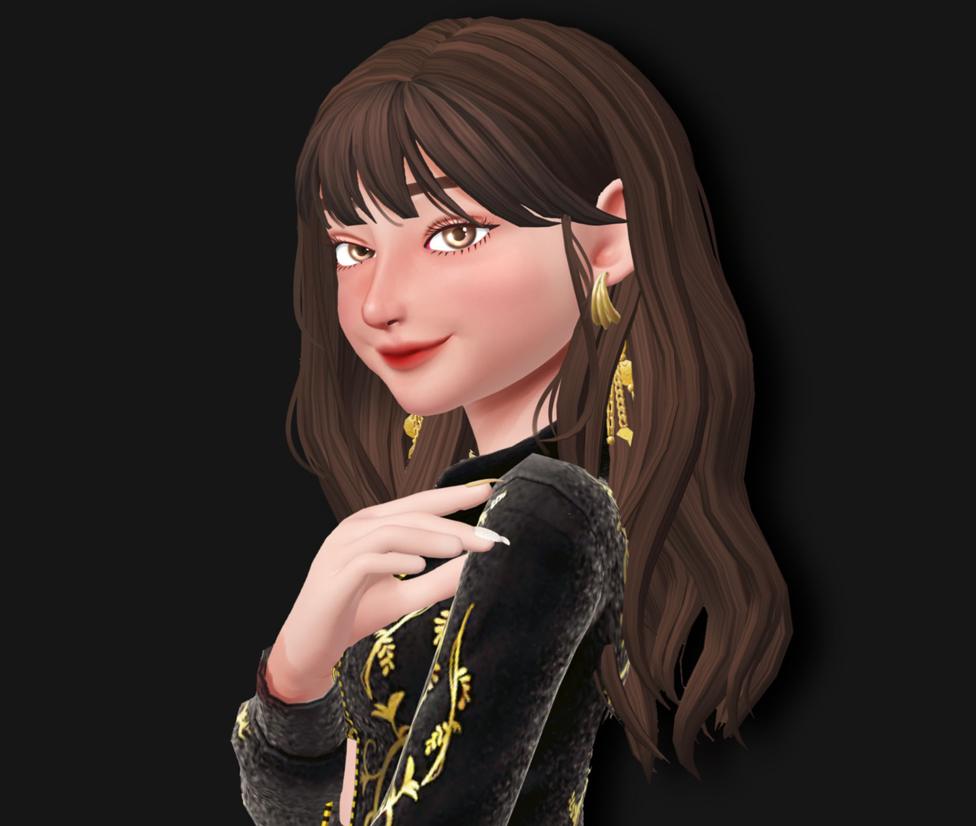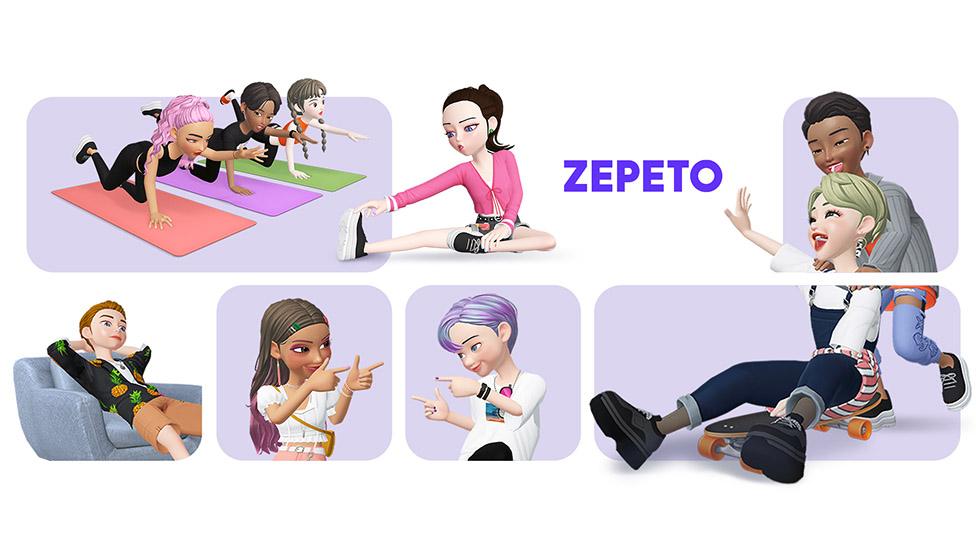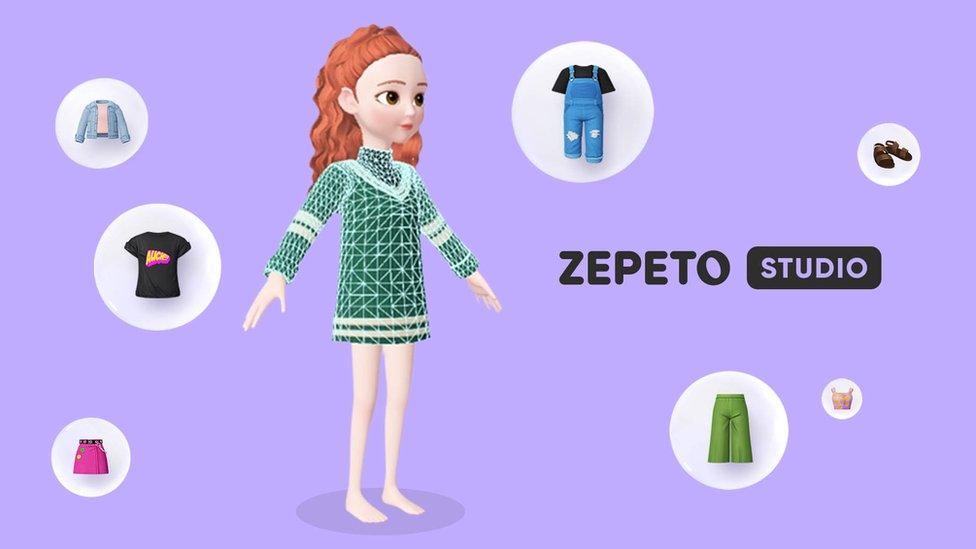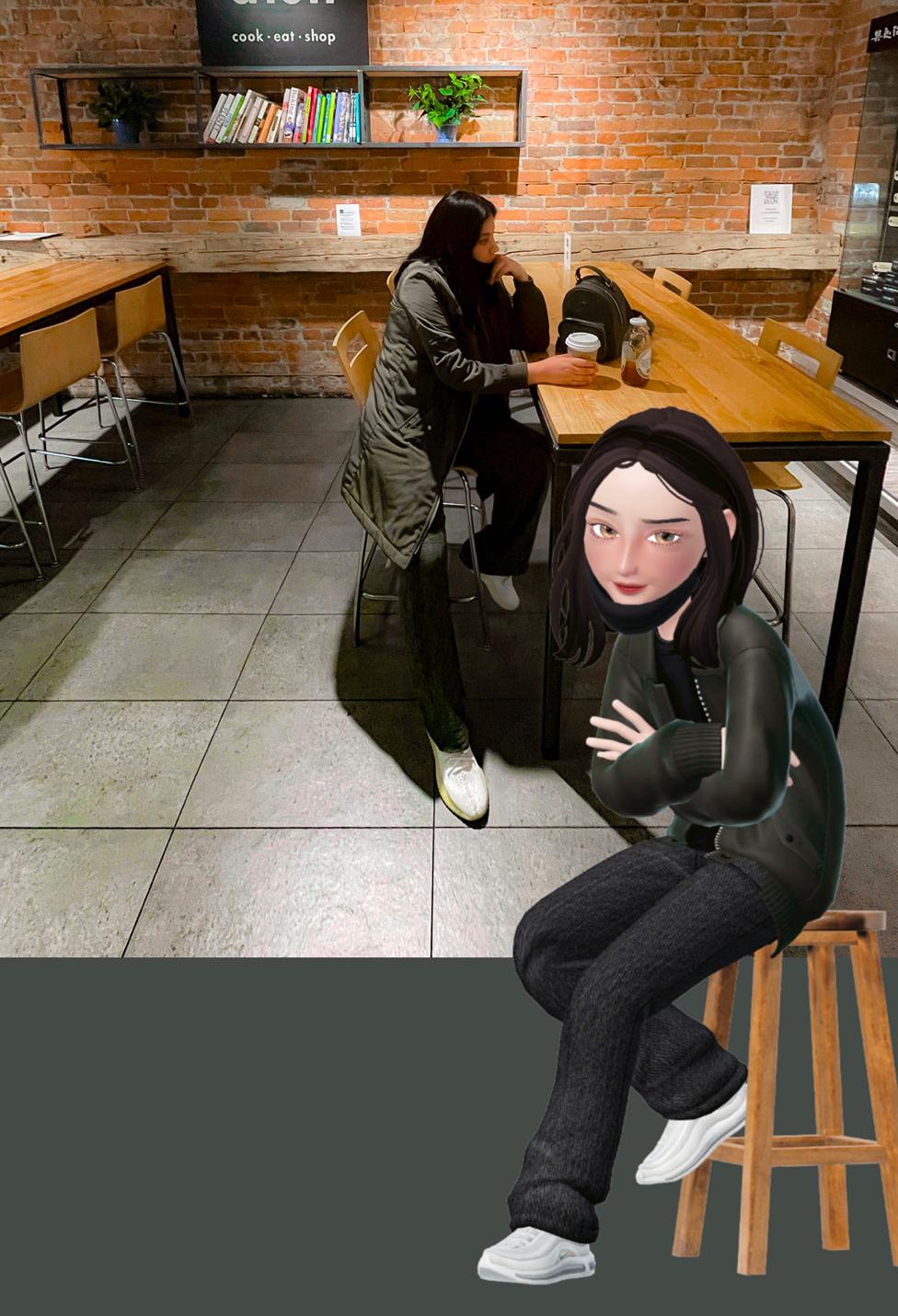Is this the world's largest virtual fashion show?
- Published

Zepeto is Asia's biggest metaverse platform, with almost a quarter of a billion users
With five minutes to kill on your commute, or between meetings, which app do you open? For many of us, it is Twitter, Instagram, TikTok or gaming apps. But for more and more teenagers, it's a metaverse platform to check-in on their avatar.
Your avatar can resemble how you look in the real world. Or, you could pretend to be someone, or something, totally different. That's half the attraction.
"My avatar is who I want to be on that day," says Monica Louise, who is also known as Monica Quin on South Korea's hugely popular metaverse social media app, Zepeto.
"In the real world, it's not easy for us to cut our hair and then grow it back, but in the digital world, we can do that with just one click."
Watch: The BBC's technology correspondent Marc Cieslak enters the metaverse
So what exactly is a metaverse? It's an alternate world online - a bit of virtual reality and a little bit augmented reality. And it's been touted as the next big thing in tech. Zepeto is Asia's biggest metaverse platform, with almost a quarter of a billion users - it launched just three years ago.
Some 70% of these people are women, some are young teenagers, which is unusual, as most rival metaverse platforms such as Roblox are dominated by gamers who tend to be male.
"A lot of our users haven't used Instagram yet, and a larger number of our users haven't used Facebook yet," says Rudy Lee, chief strategy officer of Zepeto. "We are the first social network that they are engaging with."


Monica's Zepeto avatar now earns her an impressive six-figure salary

And 90% of them are located outside South Korea, just like 28-year-old Monica, who lives in Canada, or 19-year-old Hannah who lives in the US.
They both joined Zepeto in 2018. For Monica, she liked seeing an electronic version of herself while Hannah found it by accident, scrolling through the app store and was curious.
Escapism in an alternate reality
"I've never been a huge fan of social media," Hannah tells me. "There is a lot of pressure and I didn't have the most pleasant experience but on Zepeto, you don't have to show your face and there is no obligation."
For Monica, her Zepeto avatar now earns her an impressive six-figure salary.
Monica is what is known as a virtual influencer, designing digital items such as dresses and tops which other avatars buy. Fashion plays a huge role on this platform, where creators have sold over 1.6 billion virtual fashion items to date.

Many young metaverse users leapfrog traditional social media like Twitter and Facebook
They are sold, using an in-game currency called "zems" and Monica's items range in price from one to five zems each. For every sale worth 5,000 zems, a creator gets $106 (£80). Zepeto users pay for these zems using real money.
"Everyday, we have people designing and publishing tens of thousands of new items," says Mr Lee. "I think we're the largest virtual fashion marketplace in the world."
Big luxury fashion brands like Gucci, Dior and Ralph Lauren - as well as a lot of local and regional fashion brands - are also planning to release their virtual products on the platform.
"There are clothes that I cannot afford to wear in real life but in the digital world, I can buy all of them," says Monica. "I think that's one huge factor why I'm really drawn into this."
To inspire the next generation of designers like her, Zepeto has announced a scholarship with fashion school Instituto Marangoni Miami (IMM). Last month, it asked applicants to create a collection for the platform.

You can buy your own digital wardrobe using a currency called zem
'IRL' careers
But it goes beyond fashion. You can just as easily start a career as an entertainer or architect in the metaverse.
In this space Hannah is a cartographer, she builds maps on Zepeto, meaning she creates "a virtual environment for your avatar and other avatars to explore".
"It's a bit like an alternate reality," she tells me. "I create mostly things that exist in the real world, taking inspiration from real architecture, but a lot of people make fantasy elements, too."
"We started realising that there were virtual people that are busking in the metaverse. So, we are working with music labels to develop virtual singers," says Mr Lee.


Digital humans are already fixtures in many of South Korean's favourite activities from gaming to shopping

"We are working with other colleges, high schools and online educational institutions to ensure that a lot more people have access to tools that they can use in the metaverse to create their own content and create a real career off of it."
Digital humans already populate much of South Korea's gaming, entertainment and home shopping platforms, where they act just like real-life celebrities.
Artificial Intelligence (AI) influencer, Rozy, for example, has more than 100 real life sponsorships under her belt. And conglomerate Lotte's home shopping network has Lucy - who boasts more than 60,000 followers on Instagram.

Blending the real world with her metaverse Monica Quin and her avatar
Life after death?
In the future, even deceased humans could come back to life in the metaverse.
"As technology advances, all those who have passed away - mothers, fathers, family members - can also be restored virtually," says Stanley Kim, the chief executive of Vive Studios. Vive made the news last year when the company created an avatar to help a bereaved mother grieve over the death of her daughter.
"In the next three to five years, virtual humans will be created perfectly with 3D and animated by AI. You can also replicate their voice if you have 8 hours worth of recording," he says.
But with every company getting in on the act, from Meta - formerly known as Facebook - to Microsoft, investing in the metaverse, are we going to end up with multiple different and disconnected metaverses?
"It is a bit like when we first had the internet," says Mr Kim from Vive. "There were so many companies, but eventually a few of them won the competition to dominate the industry. That's what will happen with the metaverse."


Fashion plays a huge role on the Zepeto platform, where creators have sold over 1.6 billion virtual fashion items to date.

With so many private companies at the forefront, the Seoul government in South Korea has become the first major global city to get in on the action, investing $35m into its very own metaverse.
"Instead of having to come here, to the city hall, an AI public servant will help residents in the metaverse with questions and solve real world problems," ChangKeun Lee of Seoul Metropolitan Government tells the BBC.
"We can hold festivals without worrying about Covid-19. People can even travel to space, or go back in history to the Chosun dynasty."
For most people, all of this virtual living still feels a little far-fetched. The metaverse has only recently become more of a hot topic and as with every new technology, control and regulations are bound to follow, as risks and privacy concerns grow.
And there are ethical questions to consider. For example, what if an avatar commits a crime - like stealing virtual assets - in the metaverse?
"I think what's really important is for the regulators to use this a lot more, and then be able to understand what the actual pros and cons of it are. And have a lot of dialogues with operators like us that are managing the platforms as well as the users," says Mr Lee of Zepeto.
For now though, one thing is clear - the metaverse is still taking shape in bits and pieces but the race to populate it and create the most valuable assets that will sit within it, has begun.